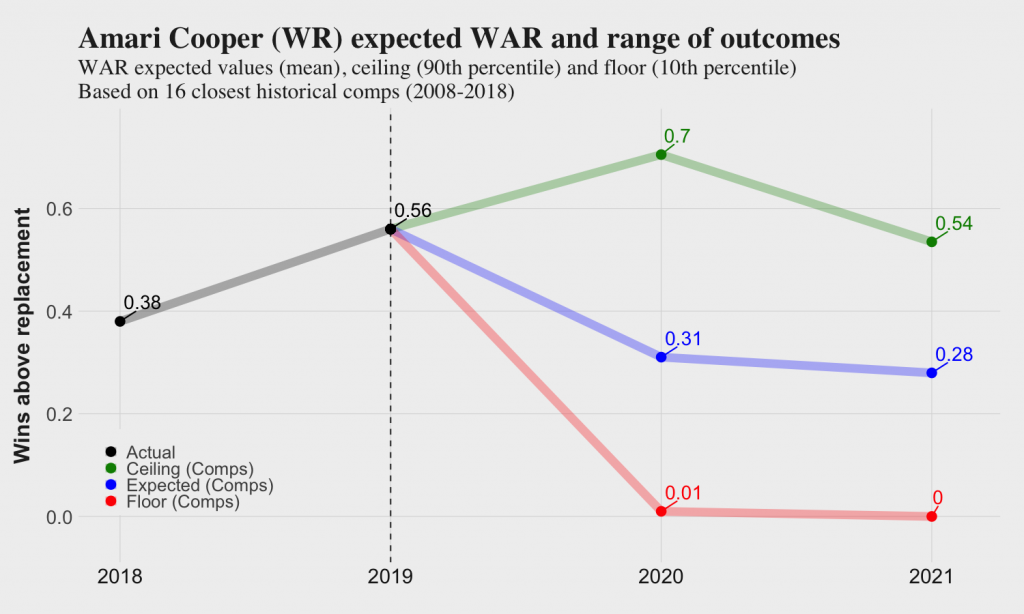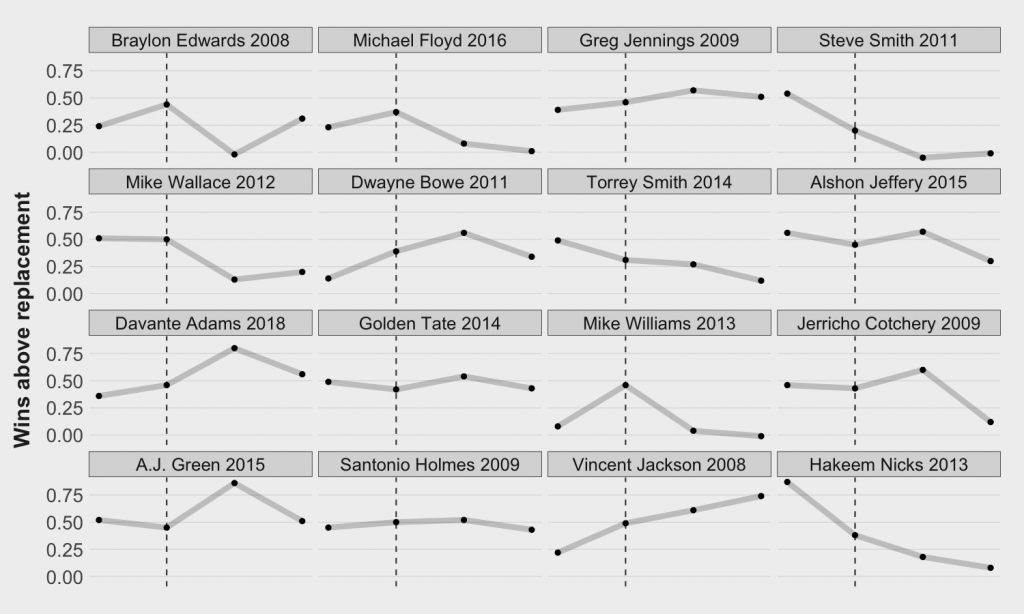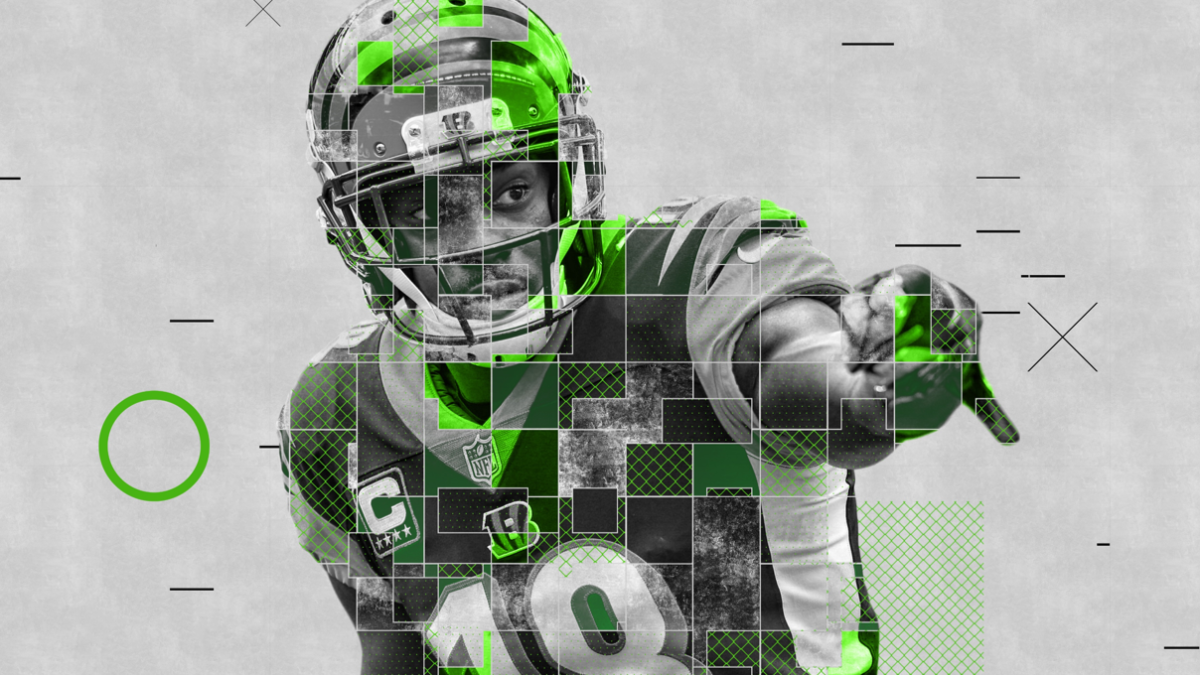With only two teams remaining to compete in the Super Bowl, the offseason is in full swing for the rest of the NFL and football pundits. We at PFF are also getting into the action with the launch of our 2020 Draft Guide and new Free Agency Rankings tool, which allows you to sort by position and team needs and includes contract projections from OverTheCap as well as historical grades and wins above replacement (WAR) numbers for the past three seasons.
I am also doing a series of articles that will go through our top-50 ranked free agents (excluding QBs), using their past stats to match them with historical players. Once we have a sample of similar players, we can see how those similar players performed in subsequent seasons to get an idea of the current player’s range of outcomes.
This system is similar to FiveThirtyEight’s CARMELO player projections, only it is applied to football and uses PFF’s WAR metric as the proxy for player value.
In earlier research, I looked at historical WAR and salary cap figures to derive the approximate cost of a win. Adjustments to our WAR calculation and the ever-rising NFL salary cap has moved the current estimate for the price of a win for spending on unrestricted free agents at 34.2% of the cap, or $68.4 million based on an assumed 2020 cap of $200 million.
Buying wins in free agency is an expensive proposition, but the value of each incremental win for a playoff-caliber team cannot be understated. This year, teams are going to have tough decisions on how to spend that money.
In this article, we’re starting the free agent forecasts with the wide receiver position. What will become apparent from the value numbers below is that our WAR numbers probably see the position as more impactful than some NFL decision-makers. However, the numbers will also show that the position generally has a lower floor when players don’t meet expectations.
Methodology
For each of the receivers below, the closest comparable players were found by measuring the similarity between them based on several features — age (within one year), weight, WAR, previous-year WAR, targets per game, average depth of target, PFF route grades and WAR per snap.
The most similar players across these metrics are grouped together to calculate the expected WAR numbers for 2020 and 2021, with the weight of each comp reflecting the level of similarity. I didn’t use the same number of comps for all players, as it is more difficult to find a wide range of comparable seasons for older players.
The first plot displays past and future performance for the free agent based on the comp, the next shows the relevant WAR numbers for each of the comps and the final table gives the dollar-based value figures for 2018-2021, with assumed per-team salary caps of $200 million in 2020 and $215 million in 2021. I decided to restrict the forecasts to the next two years in order to maximize the number of comparable players we have in the dataset, reduce error for longer forecasts and reflect the fact that all but the top-tier free agent contracts in the NFL are glorified two-year deals that give teams the option to continue.
No. 6: Amari Cooper

Amari Cooper is our sixth-ranked free agent for 2020, and there is some chance he hits the market, given that the Dallas Cowboys have to worry about multiple potential free agents this summer. The expected WAR numbers for 2020-21 don’t look great compared to the jump Cooper saw this season, but they are roughly in line with his 2018 numbers.

Cooper’s comps include many familiar names, and these players were often not as far into their careers as Cooper, who will only be a little over 26 years of age when the 2020 season kicks off. The upside of Cooper is the career of A.J. Green or Greg Jennings, with the downside being Hakeem Nicks or Mike Williams.
|
Outcome |
2018 | 2019 | 2020 | 2021 | Two-Year Per |
| Actual/Expected | $23.0 | $41.8 | $21.2 | $20.6 | $20.9 |
| Ceiling (90th) | N/A | N/A | $47.9 | $39.7 | $43.8 |
| Floor (10th) | N/A | N/A | $1.0 | $1.0 | $1.0 |
Based on his WAR numbers, we expect Cooper to generate $20.9 million of value over the next two seasons, which is slightly less than Julio Jones, but it's also a realistic target in a rising cap environment. If Cooper can reach his ceiling, there isn’t an amount he can be paid and be too expensive.
One thing to keep in mind is that younger players will be relatively undervalued in this analysis, as they have more potential than older players to hit the ceiling outcome that extends beyond the next two seasons, which are covered here.
Exclusive content for premium subscribers

WANT TO KEEP READING?
Dominate Fantasy Football & Betting with AI-Powered Data & Tools Trusted By All 32 Teams
Already have a subscription? Log in



 © 2025 PFF - all rights reserved.
© 2025 PFF - all rights reserved.